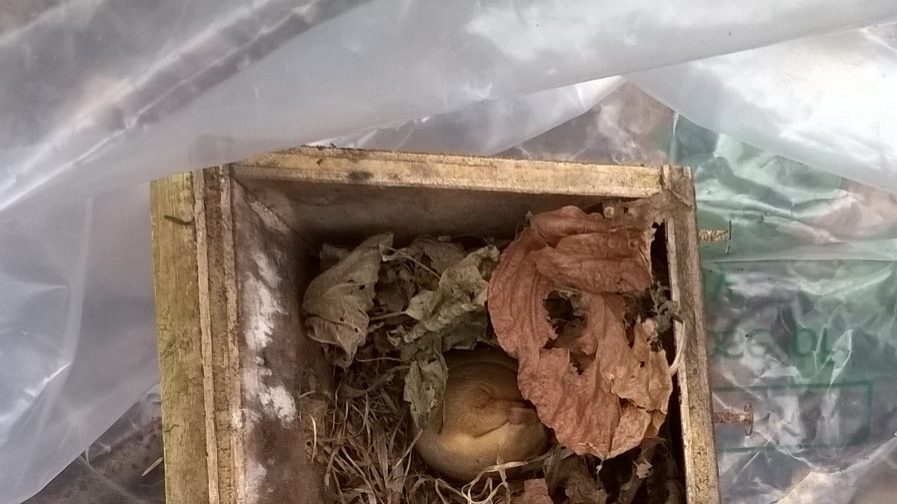As relaxation and to help the endangered dormouse population, our ecologists have enjoyed a busman’s holiday. On Sunday we checked our local dormouse boxes, as part of the National Dormouse Monitoring Programme (NDMP). The programme has been set up to monitor dormouse boxes in 350 locations around Britain. Thomson Ecology monitors 50 dormouse boxes in an area of woodland in Merrow, Surrey.
Our dormouse licence holders found one active male. He seemed relaxed, and a brief examination showed that he had been fur clipped for identification, but the fur had grown back. So we took a photo, and sent it to the Surrey Dormouse Group for identification, as they have numerous monitoring sites around Surrey, including one adjacent to our site. The Surrey Dormouse Group is able to identify individual dormice through fur clipping and to record their movements around the woodland. We think that this could be the first time that one of the clipped dormice have turned up in one of our boxes.
The dormouse (Muscardinus avellanarius), also known as the hazel dormouse, is our only native dormouse and one of the most endangered mammals in the UK. Dormice are absent in Scotland and Northern Ireland but are a Species of Principal Importance in England (NERC Act 2006) and listed under Section 7 of the Environment (Wales) Act 2016. They are also offered some protection under the Wildlife and Countryside Act (as amended) 1981, and are a European Protected Species. This legislation means that it is an offence to deliberately kill, injure or disturb the animals or interfere with their places of shelter. Additionally, a licence is required to carry out activities such as dormouse surveys.











